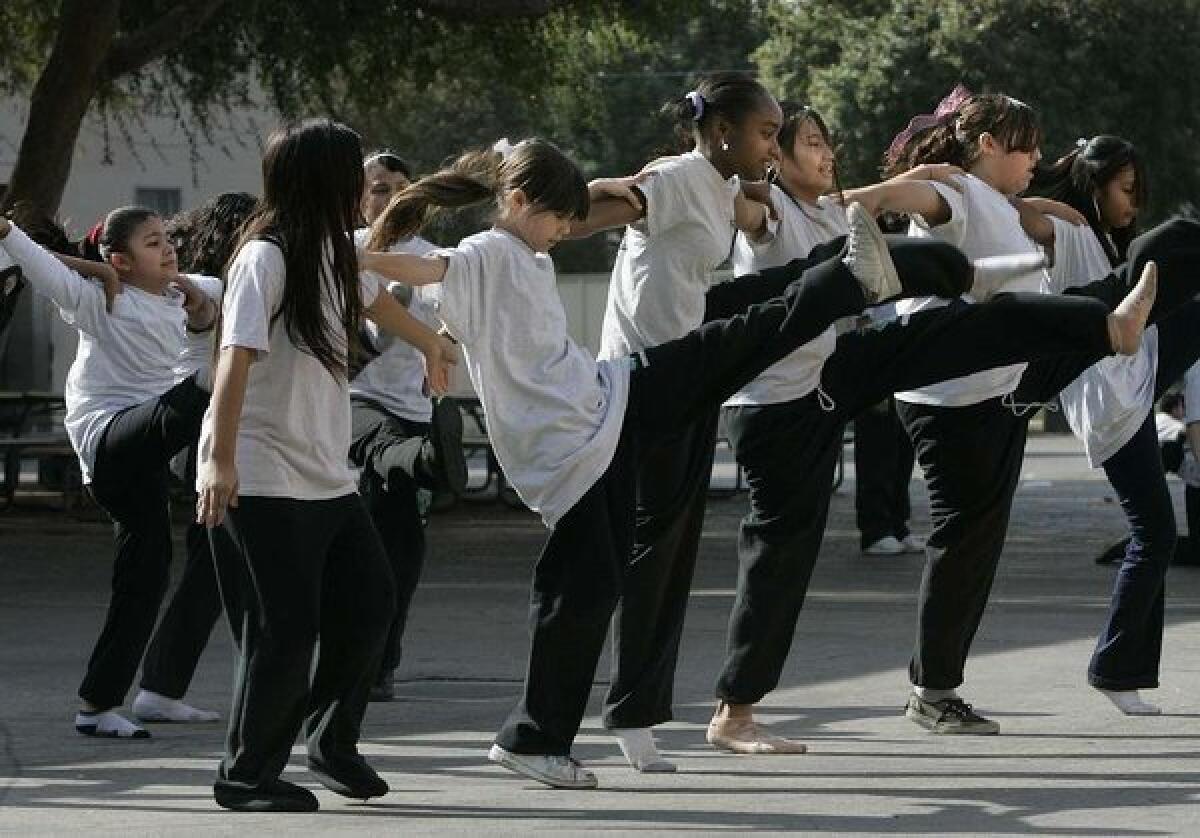More gym for kids means less chance of obesity, Cornell study says

- Share via
More physical education in kindergarten through fifth grade means less chance of obesity, especially for boys, researchers say.
The study provides some of the first evidence of a causal effect between gym and childhood obesity. It is to be published in the Journal of Health Economics.
A number of health organizations, including the Centers for Disease Control and Prevention, have advocated for increased gym class time as one response to the dramatic rise in childhood overweight and obesity. But there has not been much known about the effect of such classes, the researchers said.
They took information from a national registry, the Early Childhood Longitudinal Study, and from states that require minutes spent in physical education to determine the effects. More gym time reduces the probability of obesity among fifth-graders – more so among boys than girls, the study found. And it found that the increase in gym time did not replace academic time or harm test scores.
So what’s the result? An additional hour of gym time lowers the body mass index by 0.5 for all children, but 0.9 for boys. (BMI is a measure based on height and weight. A score over 25 indicates overweight.) Put another way, those extra 60 minutes reduce the probability that a fifth-grader is obese by 4.8 percentage points.
The researchers found that the additional PE time has a negligible effect for girls. One explanation is that gym complements boys’ participation in organized sports and other structured activity, but for girls gym is a substitute for those other activities, says lead researcher John Cawley, a Cornell University professor of policy analysis and management.
Overall, that compares with other comprehensive interventions of diet and activity that resulted in a reduction of 1.9 to 3.3 BMI units after a year, the researchers wrote.
The prevalence of obese elementary school kids quadrupled from 1965 to 2000, and in 2009-10, a third of children ages 6 to 11 were overweight. The researchers, from Cornell, Emory and Lehigh universities, measured children who went to kindergarten in fall of 1998. Data were collected about them at several points through fifth grade, including gender, height and weight, as well as measures of their activity in and out of school and time watching TV.
The surgeon general urged all school systems to require 150 minutes per week of physical education; as of 2006, only 3.8% of elementary schools had done so.
And in the five years after implementation of No Child Left Behind law, evidence shows that 9% of school districts decreased gym time.
Some confounding factors could include that physical fit children are more likely to take part in gym class, and wealthier schools may be more likely to offer it. The researchers said they accounted for these possibilities. In addition, even in schools with a gym mandate, there’s often poor compliance, the researchers said.
mary.macvean@latimes.com
@mmacvean on Twitter






